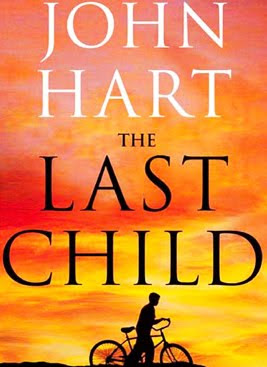 At the start of The Heights, Peter Hedges paints the picture of a couple that could be anyone. Tim teaches at the exclusive Montague Academy; he's a genuinely nice guy even if he is a bit nerdy. Most people would even call him scattered, too busy to be stylish, and forever trying to finish his dissertation.
At the start of The Heights, Peter Hedges paints the picture of a couple that could be anyone. Tim teaches at the exclusive Montague Academy; he's a genuinely nice guy even if he is a bit nerdy. Most people would even call him scattered, too busy to be stylish, and forever trying to finish his dissertation. His wife, Kate, is a stay-at-home mom who enjoys raising their two small sons in their safe Brooklyn Heights neighborhood, with its upscale coffee shops, private schools and green streets. Kate and Tim aren't wealthy. They live in a cramped apartment filled with children’s artwork and other trappings of normal life. Like many people, they are struggling to make ends meet.
The Heights is the story of an average middle class family. Their suburbia could be yours or mine.
And then one day, a wealthy, beautiful and mysterious stranger meets Kate. Anna Brody, the beautiful wife of wealthy Phillip Ashworth, is about to move into the neighborhood and Kate assures her that it is a great place to live. And from that point forward, everything begins to fray.
With Kate unexpectedly receiving a job offer from a former boss and Tim taking a leave of absence from teaching to finish his dissertation and stay home with the kids, the couple unwittingly opens the door for Anna to peer deeper into their seemingly normal, unglamorous lifestyle.
It's almost too easy. Anna has a little girl so she and Tim mingle in the same circles — moms and dads in the Heights’ playground, coffee shops, and schools. The two develop a mutual interest that doesn't seem innocent beneath the surface.
Kate doesn't notice. She is too busy with her lucrative position of giving a foundation’s money away to worthy charities. Next comes the opportunity to reconnect with an ex-boyfriend after he contacts her out of the blue. He is a television star.
And then there is Bea Myerly, a former student of Tim’s who has always had a mad crush on him. And of all the people Anna could hire as a babysitter, she chooses his former student. And from then on, everybody and anybody begins to wonder.
Maybe you don't need more than you have. Maybe you only think you do.
Told as only Hedges can tell it, The Heights is a story about people who don’t need more than they have but think they do. With every character rendered so deeply, it will leave most people wondering why Hedges took more than a decade off before writing for the page as opposed to the screen again.
 Hedges, in case you don't know, is probably best known for writing What’s Eating Gilbert Grape and co-writing the Academy Award-nominated screenplay for the Hugh Grant film About A Boy. And much like those stories, Hedges takes the inexplicably ordinary case of people who think the grass is always greener and turns it into something else.
Hedges, in case you don't know, is probably best known for writing What’s Eating Gilbert Grape and co-writing the Academy Award-nominated screenplay for the Hugh Grant film About A Boy. And much like those stories, Hedges takes the inexplicably ordinary case of people who think the grass is always greener and turns it into something else. Sure, Anna wants what Kate has. And Kate wants want Anna has. And Bea wants what she thinks they have. And at some point, Tim becomes less sure if he has anything left to want. Or, at least that's the feeling Hedges instills presenting the story as a bystander. He lets Kate and Tim tell the story, and occasionally has an ancillary character like Bea tell some parts too.
The Heights By Peter Hedges Earns A 5.7 On the Liquid Hip Richter Scale.
The Heights is an excellent telling with honest writing and the right rushed pace. You might even have a sense that The Heights will probably translate very well to the big screen. You would be right. The author plans to direct and produce the film in the next year or two.
The Heights: A Novel is available on Amazon. The Heights by Peter Hedges is also available at Barnes & Noble. The trade paperback and digital versions were released by Dutton Books in late February.
![Liquid [Hip]](https://blogger.googleusercontent.com/img/b/R29vZ2xl/AVvXsEjAFBQPqS7J0-rrttNoRYSsuwIePPZf4Nq6sqDioK1zzVQXJIQXKzq_NVNI4n6h3inuRQFBKOcJeZeSufkdHHIOxbSWyBjTjTxgKEQGyPzdwvkEEeECh4bI5YEGk4RWGUINSd7vulPQsCA/s1600-r/liquidhip.jpg)























